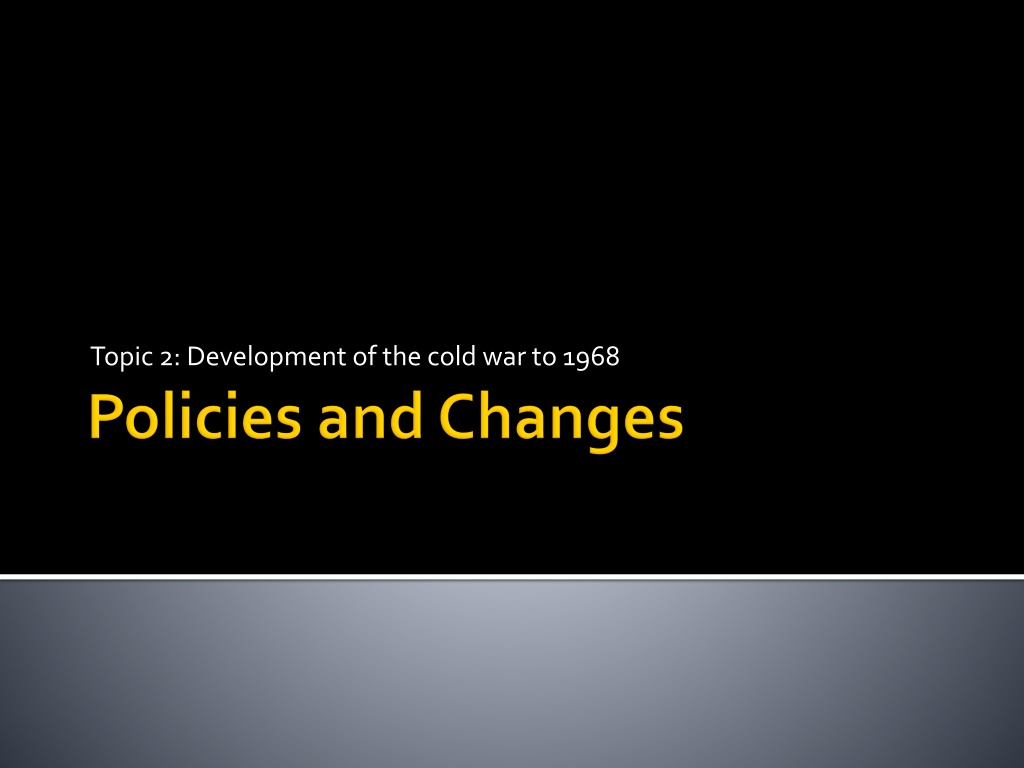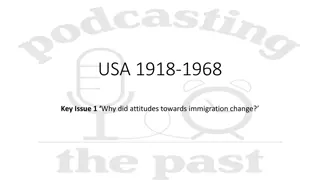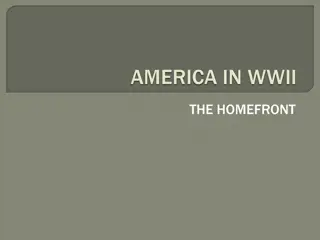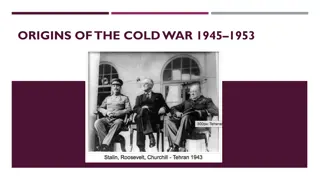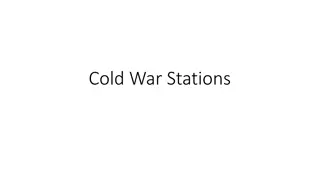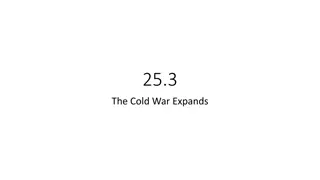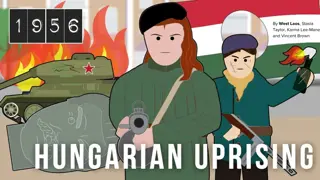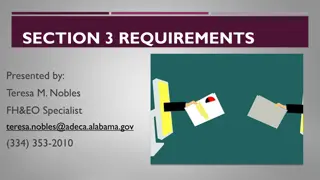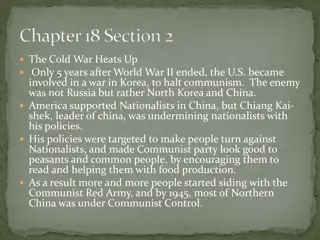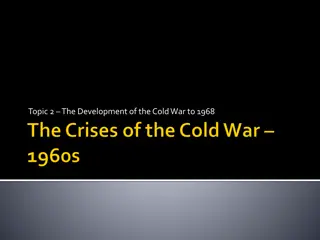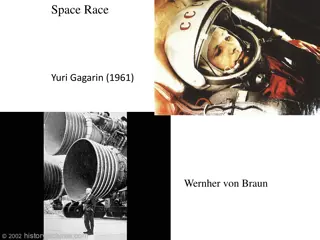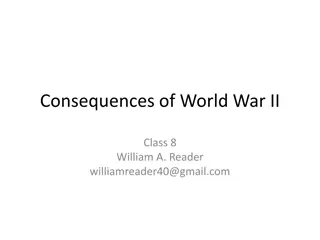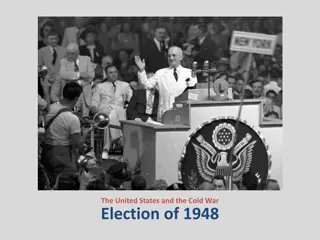Cold War Development to 1968
The Cold War escalated from the US providing support to countries threatened by communist expansion to the Soviet Union's policy of peaceful co-existence in the 1950s under new leadership like Nikita Khrushchev. Tensions rose with issues like Berlin becoming a free city proposal. The period also saw diplomatic relations being re-established and the end of the Korean War.
Download Presentation

Please find below an Image/Link to download the presentation.
The content on the website is provided AS IS for your information and personal use only. It may not be sold, licensed, or shared on other websites without obtaining consent from the author.If you encounter any issues during the download, it is possible that the publisher has removed the file from their server.
You are allowed to download the files provided on this website for personal or commercial use, subject to the condition that they are used lawfully. All files are the property of their respective owners.
The content on the website is provided AS IS for your information and personal use only. It may not be sold, licensed, or shared on other websites without obtaining consent from the author.
E N D
Presentation Transcript
The US would give military and financial support to any government threatened by communist expansion, for example South Korea, Cuba and South Vietnam
The theory that the states of South East Asia would come under communist control, unless they were supported with financial and military aid
The Soviet Union introduced a policy of peaceful co-existence in the 1950s due to: - Stalin s death in 1953 - Advancement of the US in nuclear weapons - The Soviet Union were surrounded by US supporters in Europe - Yugoslavia would not allow their country to be absolved by the Soviet Union - The Soviet influence in third world countries was declining
Malenkhov(one of Stalins successors) said: there is no dispute or unresolved question that cannot be settled peacefully by mutual agreement of the interested countries. Soviet citizens who married foreigners were allowed to leave the Soviet Union Diplomatic relations with Greece, Yugoslavia and Israel were being re-established The Korean War ended
1955 there was a new leader, Nikita Kruschchev He believed that the Soviet Union needed modernising, that Soviet control should be re-asserted but that nuclear warfare must be avoided He strengthened relations with other countries and re-built the relationship with China
In 1958, Kruschchevproposed making Berlin a free city This was unacceptable to the West because they would lose ground and it would look like they were not supporting West Germany who were becoming an important economic force in Europe Kruschchevgave the West 6 months to decide, or he would give East Germany access to Berlin
The leaders were meant to meet in Paris to make a decision, in 1960 However an American spy plane was shot down over Soviet territory Eisenhower was forced to admit that it was an American plane The summit never took place Peaceful co-existence failed
